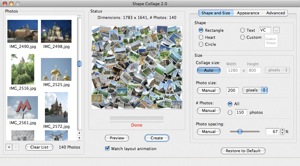“We are what we find, not what we search for.”
– Piero Scaruffi
Welcome to WRD104 — Winter Quarter 2011
In WRD 104 we focus on the kinds of academic writing that use materials drawn from research to shape reasonable conclusions based on supportable facts and convincing, defensible arguments. As the second part of the two-course sequence in First Year Writing, WRD 104 continues to explore relationships between writers, readers, and texts in the specific context of academic research and argumentation.
WRD 104 has the following learning outcomes:
 Rhetorical Knowledge, which includes focusing on defining purposes, audiences, and conventions
Rhetorical Knowledge, which includes focusing on defining purposes, audiences, and conventions
 Critical Thinking, Reading, and Writing, which emphasizes writing and reading for inquiry, thinking, and communicating; finding, analyzing, and synthesizing appropriate primary and secondary sources; exploring relationships among language, knowledge, and power
Critical Thinking, Reading, and Writing, which emphasizes writing and reading for inquiry, thinking, and communicating; finding, analyzing, and synthesizing appropriate primary and secondary sources; exploring relationships among language, knowledge, and power
 Composing Processes, which includes practice in using multiple drafts to create and complete a rhetorically appropriate audience-based text and the collaborative and social aspects of writing processes
Composing Processes, which includes practice in using multiple drafts to create and complete a rhetorically appropriate audience-based text and the collaborative and social aspects of writing processes
 Knowledge of Conventions, in which we employ a variety of genre and rhetorical conventions in order to appeal to a variety of readers and audiences
Knowledge of Conventions, in which we employ a variety of genre and rhetorical conventions in order to appeal to a variety of readers and audiences
You can read the First Year Writing Learning Outcomes in more detail here.
What that means for us
The types of primary, secondary, and tertiary sources we work with will help you to marshal your ideas and resources into productive and persuasive action in community, professional, academic, and creative environments. If you have a project from another course that you would like to continue, or a community project that would benefit from rigorous research, or a professional aspiration that needs research-based support, this is the course for you.
Your digital portfolio
This is a portfolio-based course, which means that you will collect, organize, reflect on, and showcase your work at the end of the quarter in a digital portfolio format. DePaul University has adopted Digication, a digital platform that allows you to archive your work in various stages of its production during the quarter — notes, drafts, peer reviews, finished, polished pieces — and to present it at the conclusion of our work together.
As a DePaul student, you will be able to keep your Digication portfolio and have access to it during your time here and after you graduate, as alumni. I mention this now because we can take the time to think about, and to work on, different purposes and audiences for our portfolios: for colleagues, classmates, instructors — academic purposes — and for creative, professional, career, and non-academic purposes and audiences.
 Amanda — 1:00 section — sent me this link: “Bless me iPhone for I have sinned.”
Amanda — 1:00 section — sent me this link: “Bless me iPhone for I have sinned.”

 Rhetorical Knowledge, which includes focusing on defining purposes, audiences, and conventions
Rhetorical Knowledge, which includes focusing on defining purposes, audiences, and conventions